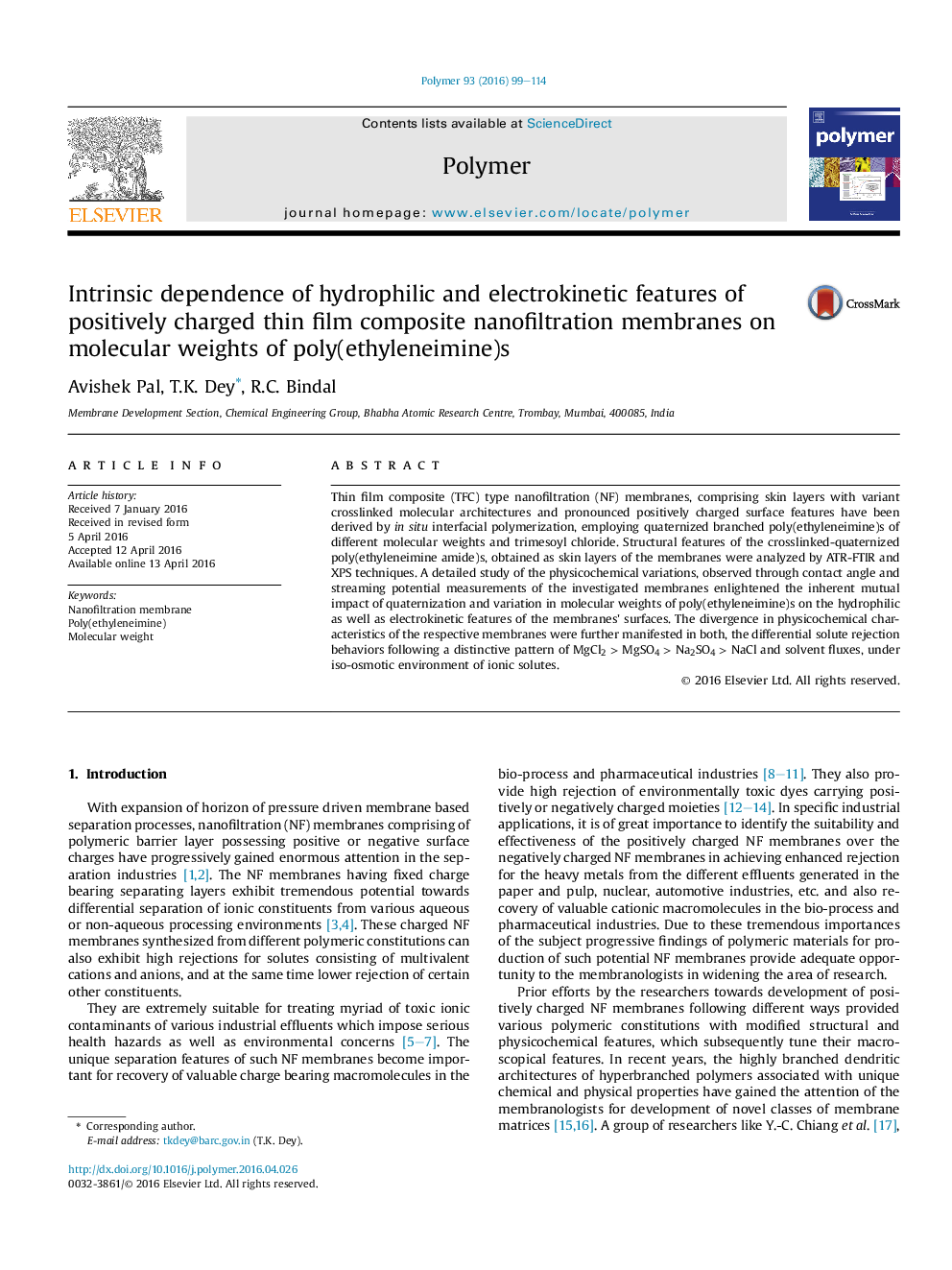| Article ID | Journal | Published Year | Pages | File Type |
|---|---|---|---|---|
| 5179349 | Polymer | 2016 | 16 Pages |
â¢Facile termolecular-complex mediated in situ autocatalysed quaternization of BPEI.â¢TFC NF membrane with crosslinked-quaternized poly(ethyleneimine amide) skin layer.â¢M.W. variation of BPEIs' affects polymers' molecular orientation and architecture.â¢Intrinsic dependency of hydrophilic and electrokinetic features on M.W. variation.â¢Quaternization tunes membranes' skin layer architecture and separation behaviors.
Thin film composite (TFC) type nanofiltration (NF) membranes, comprising skin layers with variant crosslinked molecular architectures and pronounced positively charged surface features have been derived by in situ interfacial polymerization, employing quaternized branched poly(ethyleneimine)s of different molecular weights and trimesoyl chloride. Structural features of the crosslinked-quaternized poly(ethyleneimine amide)s, obtained as skin layers of the membranes were analyzed by ATR-FTIR and XPS techniques. A detailed study of the physicochemical variations, observed through contact angle and streaming potential measurements of the investigated membranes enlightened the inherent mutual impact of quaternization and variation in molecular weights of poly(ethyleneimine)s on the hydrophilic as well as electrokinetic features of the membranes' surfaces. The divergence in physicochemical characteristics of the respective membranes were further manifested in both, the differential solute rejection behaviors following a distinctive pattern of MgCl2Â >Â MgSO4Â >Â Na2SO4Â >Â NaCl and solvent fluxes, under iso-osmotic environment of ionic solutes.
Graphical abstractDownload high-res image (282KB)Download full-size image
